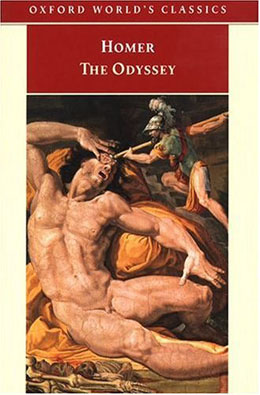Trans Literature
By Meghan Russell
Looking at novel characters in a new light

The term “transgender” didn’t really catch on till the 1970s, but it spread like wildfire in labs, medical journals, and, more recently, in pop culture. Now we’ve got dynamic trans characters in TV shows like Ugly Betty and movies like Boys Don’t Cry.
Although trannies are all the rage now, I invite you to delve deeper into historical literary works and discover that transgendered characters were no stranger to older stories. Without much acceptance, or a word to describe these individuals, characters followed abstract transgender storylines – but don’t let elusiveness fool you.
Take ancient Greek mythology. When Tiresias observed two snakes boning, he wounded the female and instantly transformed into a woman himself. Later, she saw those same horny bastards going at it and wounded the male, and she switched sexes once again. But legend has it the brief sex change pleased him. When Zeus and Hera argued over which gender enjoyed sex more, Tiresias supplied the answer: women, duh. And don’t forget the ancient gals. Athena always chose to visit mortals in the form of a man in The Odyssey.
Moving into the early twentieth century, L. Frank Baum’s The Marvelous Land of Oz (1904) makes for an educational example. A witch transforms baby Princess Ozma into a boy named Tip, who eventually changes sexes again using magic. It’s confusing, but this scenario actually mimics what often occurred in reality when a child was born with an “intersex condition.”
When a child was born having a very small penis or very large clit (think Dante’s fiancée in Clerks II), the parents had the right to choose (often incorrectly) the sex of their baby. A biological boy raised as a girl and on female hormone injections, for example, grew up feeling depressed and different. Without the courage or finances to medically change sexes, depression only worsened, sometimes ending in suicide. If it wasn’t for doctors who stressed the importance of letting the baby grow and choose his/her own gender, this idiotic practice might still occur in hospitals today.
But back when the Oz series was first published, nobody questioned the literary sex change much, and women often played the roles of young boys in theater anyway (which is, in fact, what happened in every stage and movie adaptation of the book). So while anything could happen over the rainbow, when taken off the page and played by real people, a hypothetical transgender moment frightened American audiences too much to actually re-enact it.
So I dare you, readers. Take a second look at the classics. You may need to consider making dramatic changes to your favorite character conceptions.
Images courtesy of robertarood.wordpress.com
